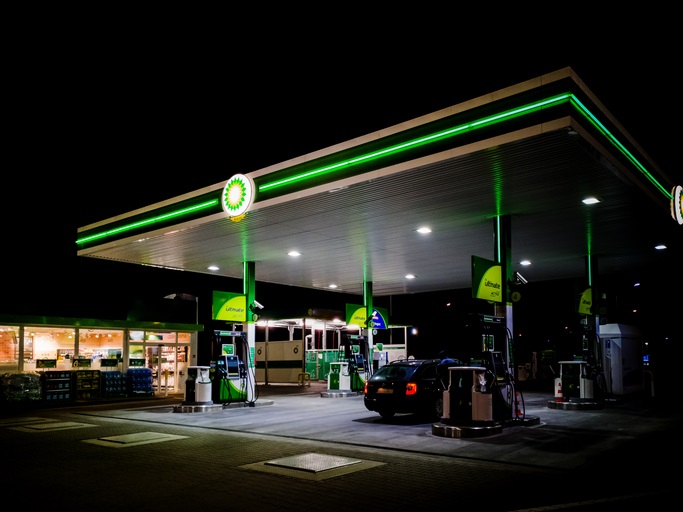BP cuts dividend, but investors still back it
Oil firm hit by low fuel demand during lockdown and an alternative energy drive, but is adapting well.
4th August 2020 12:14
by Richard Hunter from interactive investor
Oil firm hit by low fuel demand during lockdown and an alternative energy drive, but is adapting well – and quickly.

Amid a planned longer-term radical overhaul of the business, BP (LSE:BP.) has finally bitten the dividend bullet.
The sustained fall in the oil price and reduced demand for fuel arising from the pandemic has taken its toll. With oil still down 34% in the year to date, refining margins have reduced to a trickle.
Meanwhile, the effects of lockdown on demand were severe, with general travel and aircraft standing idle exacerbating what was already an oversupplied market.
At the same time, the pandemic seems to have focused our collective minds on a renewed push towards alternative energies. This affects the oil majors both in terms of the costs of maintaining existing exposure to oil, as well as ramping up the production of renewable sources.
- Energy demand to shrink for first time since early 1980s
- ii view: BP strengthens finances to save the dividend
- ii view: Can BP dividend survive switch to greener world?
While this is a longer-term challenge, the pace of change may well have significantly accelerated as global economies and consumers adjust to a different world.
Against this backdrop, BP has joined its peers in taking a red pen to its forecasts. A quarterly charge of $10.9 billion (£8.34 billion) leads to a cumulative half-yearly impairment of $12.2 billion. This has been caused by the decline in the oil price itself, lower longer-term price assumptions, revised demand projections and ongoing pressure on refining margins.
The subsequent underlying replacement cost loss of $6.7 billion for the quarter compares with a profit of $2.8 billion in the corresponding period, although the number is marginally better than what had been expected.
Operating cash flow has also taken a hit, falling by more than 40% as the pressure on BP’s outgoings intensifies. In addition, production for the third quarter is expected to be lower again, mainly due to seasonal maintenance and the effect of previous divestments.
Yet, there are glimmers of hope through BP’s current difficulties. In reshaping its business by disposing of non-core assets and reducing capital expenditure where possible, there are some immediate signs of improvement.
The net debt figure has reduced in the quarter by $10.5 billion to stand at $40.9 billion. Although this leaves the current gearing figure at 33.1%, well above BP’s target range of 20% to 30%, it still represents an improvement from 36.2% at the end of the first quarter.
Meanwhile, extra headroom has been secured, partly by some new bond issuance, with the access to liquidity figure now standing at $47 billion. This was $32 billion three months before. For the quarter, a strong contribution from BP’s oil trading unit offset some of the pain being felt elsewhere.
With an eye to the future, BP has an enlarged presence in alternative energies, with wind and solar power in particular becoming areas of focus.
From an investment perspective and even after the reduction of the dividend, the implied yield remains around 6%, which is particularly punchy in the current interest rate environment. Certainly, when set against any number of blue chip companies who have decided to defer or cancel their own payments, the yield is particularly attractive to income-starved investors. BP’s new buyback strategy to return 60% of surplus cash also provides extra flexibility.
- Funds Fan: are lower dividends here to stay?
- Shell retains support despite big loss
- Take control of your retirement planning with our award-winning, low-cost Self-Invested Personal Pension (SIPP)
The initially positive share price move reflects appreciation of the steps being taken, and at pace, such as the dividend reduction. At the same time, it is also possible that much of the sting had already been taken out of the price, given the company’s immediate prospects being limited in the current environment.
A decline of 47% over the last year compares to a drop of 19% for the wider FTSE 100, such that the immediate reaction can be viewed as something of a relief rally.
The road ahead may well be treacherous, but BP is transforming those parts of the business within its control. As such, the market consensus of the shares as a ‘buy’ shows optimism in its ability to maintain relevance in what could be a new energy world order.
These articles are provided for information purposes only. Occasionally, an opinion about whether to buy or sell a specific investment may be provided by third parties. The content is not intended to be a personal recommendation to buy or sell any financial instrument or product, or to adopt any investment strategy as it is not provided based on an assessment of your investing knowledge and experience, your financial situation or your investment objectives. The value of your investments, and the income derived from them, may go down as well as up. You may not get back all the money that you invest. The investments referred to in this article may not be suitable for all investors, and if in doubt, an investor should seek advice from a qualified investment adviser.
Full performance can be found on the company or index summary page on the interactive investor website. Simply click on the company's or index name highlighted in the article.